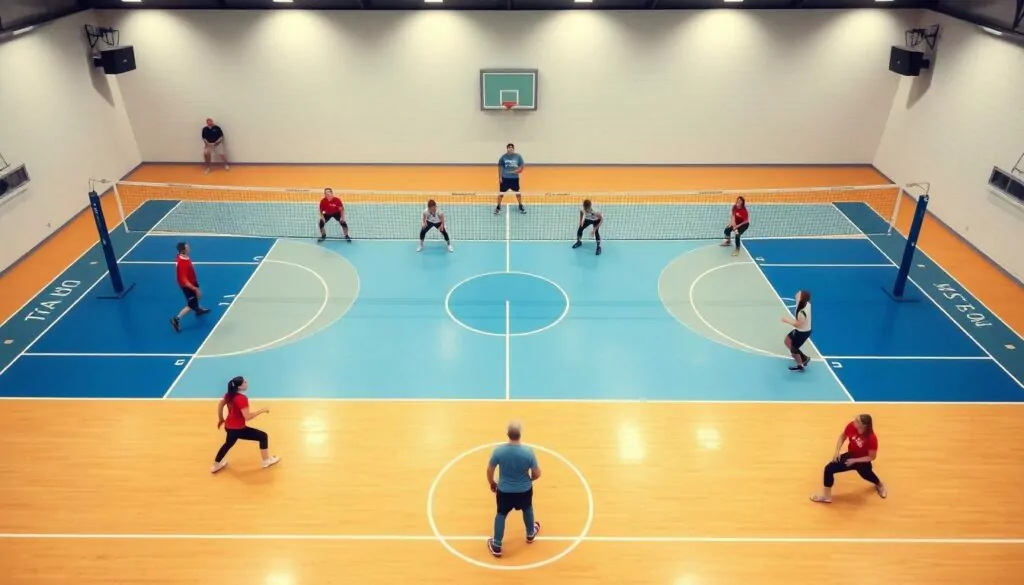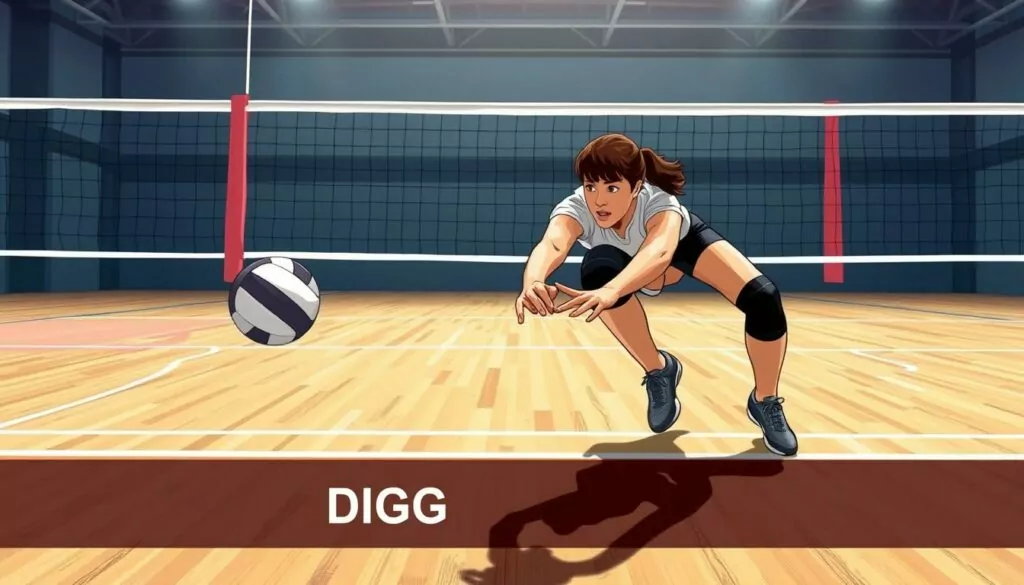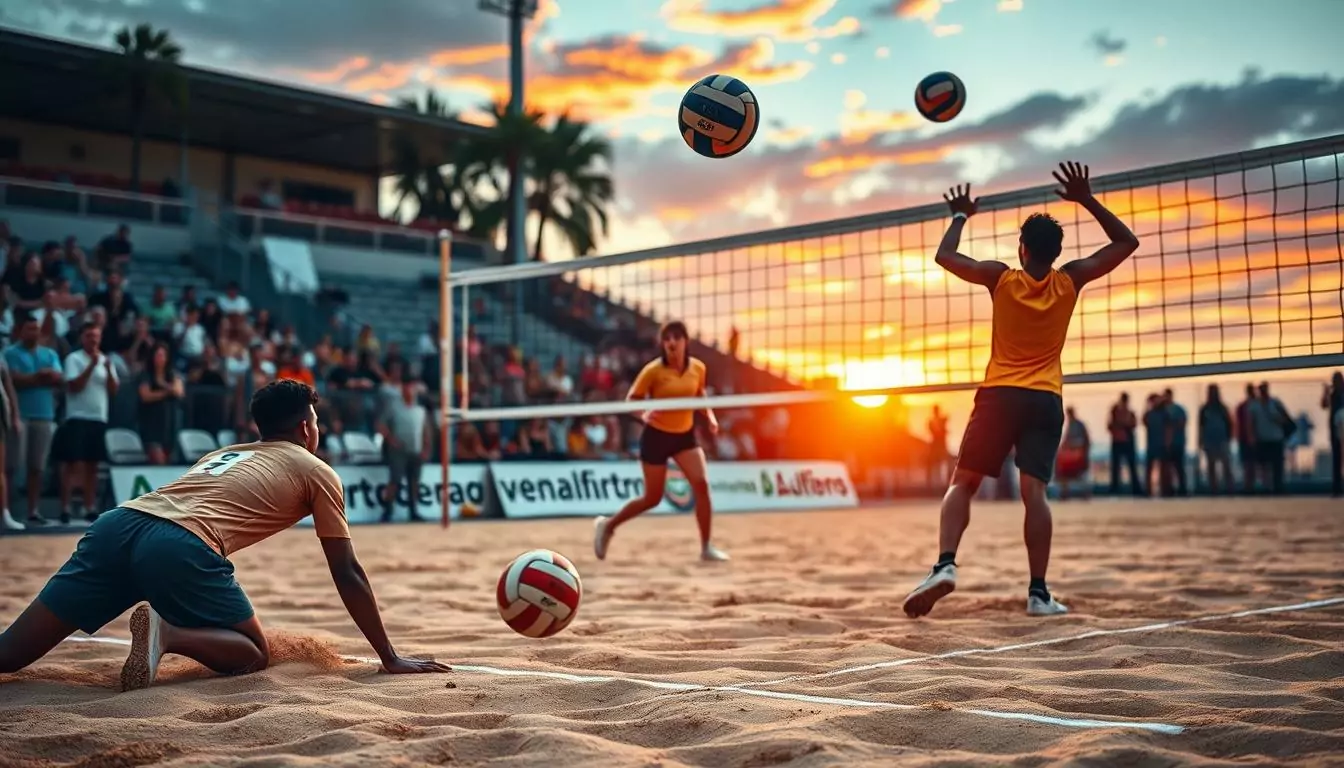Volleyball’s defense plays an important role when it comes to winning matches. The majority of points are generated by defensive play. Learning court position and techniques can change the performance of your squad.
Solid defenses are the core of any team that can be successful in volleyball. I’ve spent a lot of time learning how to play the court. Now, I’m prepared to provide you with the best tips for improving your defensive skills.
The topics covered range from simple court coverage to more advanced team formations. These techniques can help you build a strong defensive team on the court of volleyball.
Key Takeaways
- A solid defensive volleyball is crucial to win matches.
- Correct court placement improves coverage of the team
- Effective communication is vital for defensive success
- The art of mastering the digging as well as block techniques increases the performance
- Advanced defensive strategies could give teams a competitive edge
Understanding Volleyball Defensive Strategies

Mastering volleyball defensive strategies is crucial for winning games. Let’s explore the core elements of a rock-solid defense.
Basic Court Positioning and Coverage
Volleyball court positioning is vital. Players must cover specific zones to prevent defensive gaps. A typical formation has three players in front and three in back.
Reading the Opponent’s Offense
Reading offensive plays requires skill and observation. I watch the setter’s body language and hitters’ approach. This helps anticipate where the ball might go.
| Offensive Cue | Defensive Action |
|---|---|
| High set to outside | Block shifts to pin |
| Quick set to middle | Middle blocker stays central |
| Back row attack | Deep court coverage |
Communication Systems in Defense
Team communication is essential for defensive coverage. We use short, clear calls to alert teammates about plays or formation shifts. Common calls include “mine,” “help,” and “switch.”
“Defense wins championships. It’s all about trust, communication, and being in the right place at the right time.” – Karch Kiraly
By focusing on these aspects, teams can build a strong defense. This approach frustrates opponents and can change the game’s outcome.
Essential Skills for Defensive Success

Mastering defensive skills is key to winning volleyball games. Let’s explore techniques that can boost your team’s defensive performance.
Proper Digging Techniques
Volleyball digging requires skill and practice. Start with a low stance, knees bent, and arms ready. Move your feet quickly to get behind the ball.
When contact comes, form a solid platform with your arms. Guide the ball to the target with precision and control.
Blocking Fundamentals
Effective blocking can shut down strong hitters. Focus on timing and hand positioning for best results. Jump straight up, reach over the net, and spread your fingers wide.
A good block doesn’t always mean a stuff. Sometimes, just touching the ball can slow it down for your back row.
Floor Defense and Rolling
Floor defense is all about hustle and quick movements. Practice diving and rolling to save difficult balls. Stay low and move quickly to reach the ball in time.
When diving, aim to make contact with the ball first. Then, roll to spread the impact and get back up fast.
Quick Recovery Methods
Defensive recovery is crucial in volleyball. After a dig or block, push off the floor quickly. Get ready for the next play with explosive movements.
Regular cardio and agility drills can improve your recovery speed. Maintain focus throughout the game for the best results.
| Defensive Skill | Key Focus | Common Mistake |
|---|---|---|
| Digging | Low stance, solid platform | Swinging arms |
| Blocking | Timing, hand positioning | Reaching over too early |
| Floor Defense | Quick movements, proper rolling | Hesitating to dive |
| Recovery | Explosive movements, focus | Slow to get back in position |
Advanced Team Defense Formations

Mastering advanced volleyball defensive formations can give your team a significant edge. Key strategies can elevate your game. Let’s explore these game-changing tactics.
Rotational defense is a dynamic approach where players shift positions based on the opponent’s attack. This formation adapts quickly to different offensive plays. It makes it challenging for attackers to find weak spots.
Perimeter defense focuses on covering the court’s edges. Players form a ring around the court, ready to intercept shots. This strategy works well against tip shots or off-speed attacks.
Bunch defense is a compact formation where players cluster near the net. This strategy excels at blocking and defending against power hitters. It requires quick reflexes to cover deep shots.
| Formation | Strengths | Weaknesses |
|---|---|---|
| Rotational Defense | Adaptability, Coverage | Complex, Requires Practice |
| Perimeter Defense | Edge Coverage, Tip Defense | Vulnerable to Middle Attacks |
| Bunch Defense | Strong Blocking, Power Hit Defense | Weak Against Deep Shots |
Choosing the right volleyball defensive formation depends on your team’s strengths. Consider your opponent’s style when selecting a strategy. Mix these tactics to keep the other team guessing.
Conclusion
These pro volleyball defensive strategies can help you win more games. They’ll boost your team’s performance and improve your defense. Remember, improving your defense takes dedication and ongoing practice.
Implementing defensive strategies is crucial for success on the court. Mastering court positioning and digging techniques are vital skills. Team coordination ensures everyone works together to stop the opponent’s offense.
Adaptability is key when applying these strategies. Every game is unique, so adjust your defense as needed. Consistent practice and teamwork will improve your volleyball defense over time.
It’s time to use these pro tips on the court. Start your journey to becoming a defensive powerhouse today. Get ready to elevate your game and score more wins!
